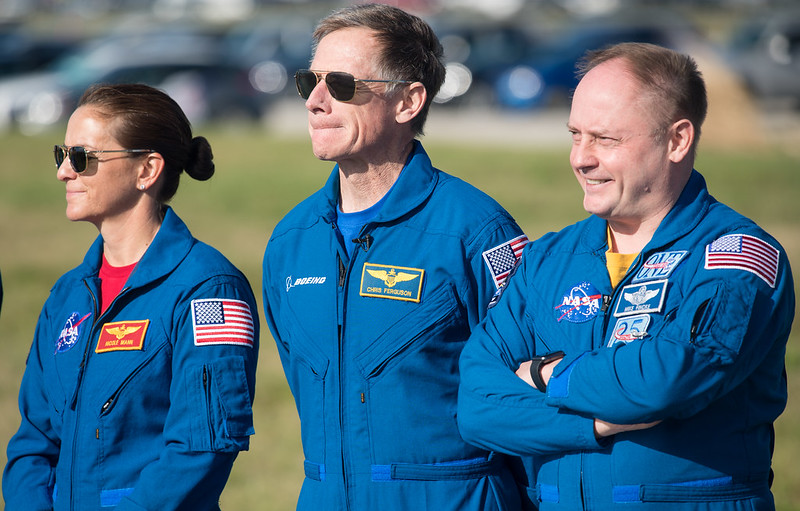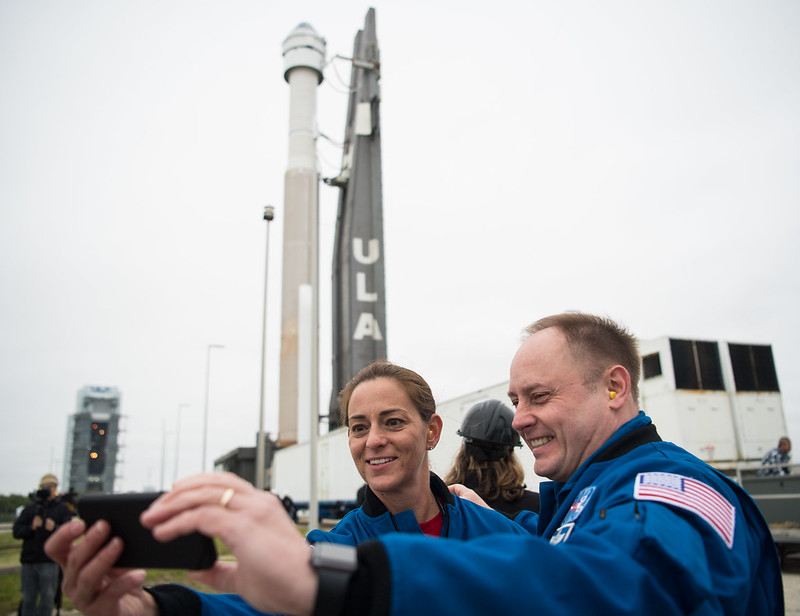NASA Astronauts Aren't Worried About Safety After Boeing Starliner Anomaly
The uncrewed Boeing Starliner test capsule that launched today won't reach the International Space Station — but astronauts scheduled for the vehicle's next flight aren't worried.
NASA astronauts Mike Fincke and Nicole Mann, along with their Boeing counterpart Chris Ferguson, are preparing to fly on Starliner's first crewed mission in 2020. Today (Dec. 20), that vehicle's uncrewed predecessor experienced an anomaly that meant the spacecraft couldn't safely reach the space station. It is expected to return to Earth safely, perhaps on Sunday (Dec. 22). But Fincke and Mann said they aren't concerned about the incident or how they would fare in a similar situation.
"We don't have any safety concerns," Mann said of the Starliner vehicle during a news conference held today.
Related: Boeing's 1st Starliner Flight Test in Photos
That sentiment was echoed by NASA Administrator Jim Bridenstine, who emphasized that although the Starliner vehicle flies itself by default, any humans on board can take over if need be.
"To be very clear, our crew would have been safe," Bridenstine said during the news conference. "We may very well be docking with the International Space Station tomorrow had they been in the spacecraft."
NASA and Boeing are still sorting out precisely what occurred inside the spacecraft to cause the anomaly, which made Starliner believe it was at a different stage of flight and perform maneuvers according to an inappropriate timetable.
Breaking space news, the latest updates on rocket launches, skywatching events and more!
But Fincke and Mann, as well as other astronauts who will fly on early Starliner missions, are highly trained test pilots, they said, able to manually control the spacecraft should a similar incident occur.
"There's always something, so that's why we flight-test," Fincke said. "That's why we have the manual capability that we have. It's not just a good idea … It's a NASA regulation that if we're going to have humans on board, have all the automation you want but always have a way out."
Mann said that the crew can control the spacecraft with the precision of firing or shutting off individual thrusters. That level of control is also available, if necessary, during landing operations.
"This anomaly has to do with automation," Bridenstine said. "Nicole [Mann] and Mike [Fincke] are trained specifically to deal with the situation that happened today, where the automation was not working according to plan."
NASA's astronaut-training program ensures that crew members can respond safely during any kind of anomalous situation.
"These are the things that we spend our time training for in simulations," Fincke said. "We spend some time on when things go right, but we're always looking at what if things go wrong."
- How Boeing's Starliner Orbital Flight Test Works: A Step-By-Step Guide
- Photo Tour: Inside Boeing's CST-100 Starliner Spaceship Hangar
- In Photos: Boeing's Starliner Pad Abort Test Launch
Email Meghan Bartels at mbartels@space.com or follow her @meghanbartels. Follow us on Twitter @Spacedotcom and on Facebook.


Meghan is a senior writer at Space.com and has more than five years' experience as a science journalist based in New York City. She joined Space.com in July 2018, with previous writing published in outlets including Newsweek and Audubon. Meghan earned an MA in science journalism from New York University and a BA in classics from Georgetown University, and in her free time she enjoys reading and visiting museums. Follow her on Twitter at @meghanbartels.


